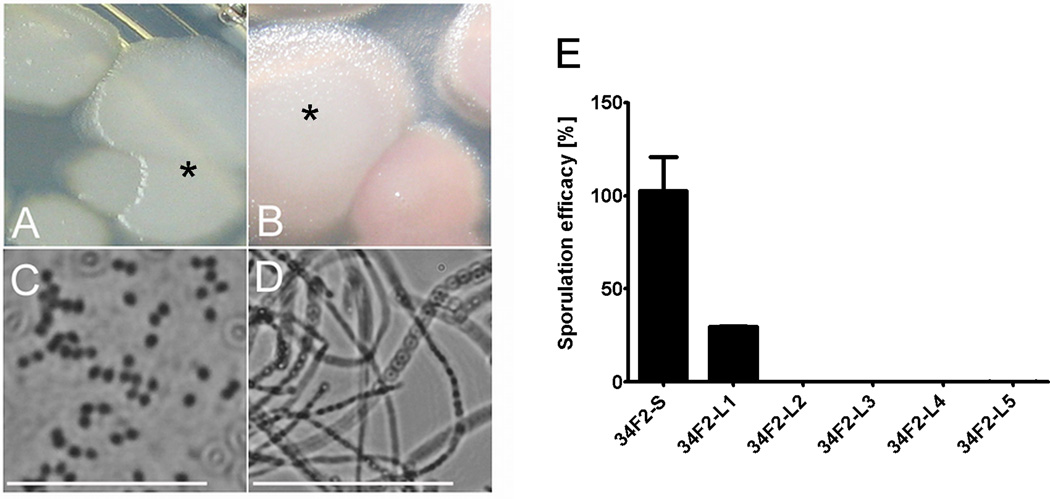Figure 1.
Colony phenotype of B. anthracis on (A) LB and (B) LB containing Congo Red, an indicator that allows phenotypic identification of asporogenic B. anthracis by lack of salmon color. Asterisks indicate large (asporogenic) colony morphologies. Microscopy of spores and bacteria derived from (C) small and (D) large colony phenotype. Bar represents 25 µm. (E) Sporulation efficacies of 5 large, asporogenic (34F2-L1 through L5) and 1 small, sporogenic (34F2-S) colony phenotypes, measured by colony counts retrieved before and after heat-treatment.

